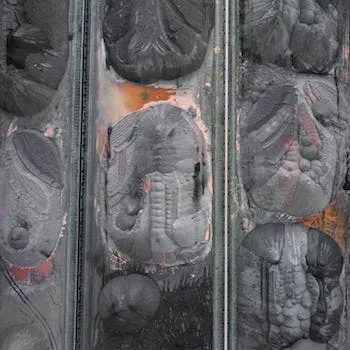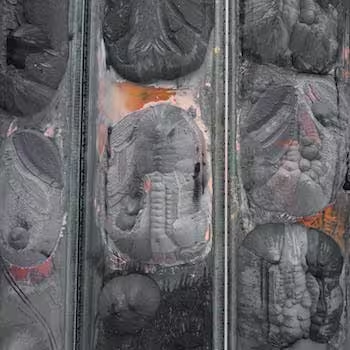-
Contents
“Unlock the Potential of AI in Mining and Geological Engineering – Safer, Smarter, and More Efficient!”
Mining and Geological Engineers, Including Mining Safety Engineers, are essential to the extraction of natural resources from the earth. As technology advances, artificial intelligence (AI) is increasingly being used in the mining industry to improve safety and efficiency. This article will explore how AI is impacting the roles of Mining and Geological Engineers, Including Mining Safety Engineers, and how they can adapt to this new technology.
How Will AI Impact the Future of Mining and Geological Engineering?

Artificial intelligence (AI) is set to revolutionize the mining and geological engineering industries. AI has the potential to improve safety, increase efficiency, and reduce costs.
AI can be used to automate many of the processes involved in mining and geological engineering. Automation can help reduce the risk of human error, as well as improve accuracy and speed. AI can also be used to analyze data from sensors and other sources to identify patterns and trends that can be used to optimize operations.
AI can also be used to improve safety in the mining and geological engineering industries. AI-powered systems can monitor conditions in real-time, alerting workers of potential hazards before they become dangerous. AI can also be used to detect anomalies in data that could indicate a potential safety issue.
AI can also be used to improve efficiency in the mining and geological engineering industries. AI-powered systems can analyze data from sensors and other sources to identify areas where operations could be improved or streamlined. AI can also be used to automate tasks such as scheduling, which can help reduce costs and increase productivity.
Finally, AI can be used to improve decision-making in the mining and geological engineering industries. AI-powered systems can analyze data from sensors and other sources to identify patterns and trends that could help inform decisions about operations or investments.
In conclusion, AI has the potential to revolutionize the mining and geological engineering industries by improving safety, increasing efficiency, and reducing costs. As AI technology continues to develop, it is likely that its impact on these industries will only continue to grow.
Exploring the Potential Benefits of AI for Mining Safety Engineers
As the mining industry continues to evolve, safety engineers are increasingly turning to artificial intelligence (AI) to help them improve safety standards and reduce the risk of accidents. AI can provide a range of benefits for mining safety engineers, from improved data analysis to enhanced predictive capabilities. In this article, we will explore the potential benefits of AI for mining safety engineers.
One of the primary benefits of AI for mining safety engineers is improved data analysis. By leveraging AI-driven analytics, safety engineers can quickly identify patterns in large datasets that may indicate potential risks or hazards. This can help them make more informed decisions about how to best protect workers and ensure compliance with safety regulations. Additionally, AI-driven analytics can be used to monitor and analyze the performance of safety systems over time, allowing engineers to identify areas where improvements can be made.
Another benefit of AI for mining safety engineers is enhanced predictive capabilities. By leveraging machine learning algorithms, safety engineers can develop models that can accurately predict potential risks or hazards before they occur. This can help them take proactive steps to mitigate these risks and prevent accidents from occurring in the first place. Additionally, AI-driven predictive models can be used to identify areas where additional safety measures may be needed, allowing engineers to proactively address potential issues before they become a problem.
Finally, AI can also be used to automate certain aspects of the mining safety process. For example, AI-driven robots can be used to inspect mines for potential hazards or risks, freeing up safety engineers to focus on other tasks. Additionally, AI-driven systems can be used to monitor workers in real-time and alert supervisors if any unsafe behaviors are detected. This can help ensure that workers are following proper safety protocols at all times and reduce the risk of accidents occurring.
In conclusion, there are numerous potential benefits of AI for mining safety engineers. From improved data analysis and enhanced predictive capabilities to automated processes and real-time monitoring, AI has the potential to revolutionize the way that mining safety is managed and improve overall worker safety in the process.
Examining the Challenges of Implementing AI in Mining and Geological Engineering
The implementation of Artificial Intelligence (AI) in mining and geological engineering is a rapidly growing field that presents a number of challenges. AI has the potential to revolutionize the way mining and geological engineering are conducted, but there are several obstacles that must be overcome before this can be achieved. This article will examine some of the key challenges associated with implementing AI in mining and geological engineering.
One of the primary challenges associated with implementing AI in mining and geological engineering is the lack of data available for training and testing algorithms. Mining and geological engineering involve complex processes that require large amounts of data to accurately model. Without sufficient data, it is difficult to develop accurate models that can be used to make decisions or predictions. Additionally, the data must be collected from a variety of sources, including sensors, surveys, and other sources, which can be time-consuming and expensive.
Another challenge associated with implementing AI in mining and geological engineering is the need for specialized hardware and software. AI algorithms require powerful computers with specialized hardware and software to run efficiently. This can be costly for companies that are just beginning to explore AI technology. Additionally, many of these algorithms require significant amounts of computing power, which can be difficult to access in remote locations where mining operations take place.
Finally, there is the challenge of integrating AI into existing systems. Mining and geological engineering involve complex processes that have been developed over many years. Integrating AI into these systems requires careful consideration of how it will interact with existing processes and how it will affect safety protocols. Additionally, there may be legal or regulatory issues that must be addressed before AI can be implemented in certain areas.
In conclusion, implementing AI in mining and geological engineering presents a number of challenges that must be addressed before it can become a reality. These include the lack of data available for training and testing algorithms, the need for specialized hardware and software, and the difficulty of integrating AI into existing systems. Despite these challenges, AI has the potential to revolutionize the way mining and geological engineering are conducted, making it an exciting field to explore.
Q&A
1. How is AI affecting the work of Mining and Geological Engineers, Including Mining Safety Engineers?
AI is being used to automate many of the tasks that Mining and Geological Engineers, Including Mining Safety Engineers, used to do manually. This includes tasks such as data analysis, predictive modeling, and geological mapping. AI can also be used to improve safety in mines by monitoring conditions and alerting workers to potential hazards.
2. What are some of the benefits of using AI in the mining industry?
Some of the benefits of using AI in the mining industry include improved safety, increased efficiency, better decision-making, and cost savings. AI can be used to automate tedious tasks such as data analysis and predictive modeling, which can help reduce costs and increase productivity. Additionally, AI can be used to monitor conditions in mines and alert workers to potential hazards.
3. What challenges do Mining and Geological Engineers, Including Mining Safety Engineers face when using AI?
One of the main challenges that Mining and Geological Engineers, Including Mining Safety Engineers face when using AI is ensuring that the data they use is accurate and up-to-date. Additionally, they must ensure that the algorithms they use are reliable and trustworthy. Finally, they must ensure that their AI systems are secure from cyberattacks or other malicious activities.Overall, it is clear that AI is having an impact on the work of Mining and Geological Engineers, Including Mining Safety Engineers. AI can help to automate certain tasks, such as data analysis and predictive modeling, which can reduce the amount of time needed to complete a project. Additionally, AI can be used to improve safety in mines by providing real-time monitoring and alerting of potential hazards. While AI may not completely replace the need for human expertise in this field, it is likely to have a significant impact on the way these professionals work in the future.
If you’re a Mining and Geological Engineer, including Mining Safety Engineers, and you’re wondering how AI will affect your job, then click here to learn more! Learn More About AI Here


